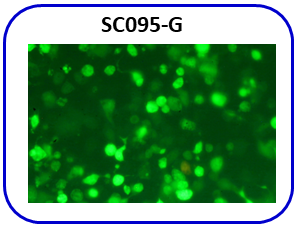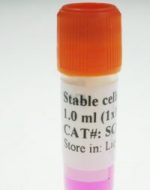Description
Human adherent, PC-9 (previously known as PC-14), is a cell line derived from human lung adenocarcinoma, a non-small cell lung cancer (NSCLC) consisting of a heterogeneous mixture of round and spindle-shaped cells.
PC-9 cells are often used as a model for studying lung cancer, including the molecular mechanisms involved in its development and progression and targeted therapies. PC-9 cells are particularly notable for harboring a deletion mutation in exon 19 of the EGFR gene. The mutations make the cells responsive to EGFR tyrosine kinase inhibitors (TKIs), which are used in the treatment of some lung cancers. Thus, PC-9 cells serve as a model to study resistance to tyrosine kinase inhibitors (TKIs) in lung cancer
This GFP / PC-9 cell line was transformed via Lentivirus transduction. This reporter cell line can be tracked in vivo by fluorescent signal, providing convenient tools for studying the mechanisms of tumor growth and metastasis, and as the therapeutic model for evaluating various treatment effects in animal.
It constitutively express GFP under EF1a promoter. The Puromycin resistance marker was expressed under Rsv promoter. The following express cassette was integrated into cell-line’s genome.

Each cell demonstrates a strong GFP fluorescent signal (see sample image below).

Sold at: 1 vial x (2 x 106 cells)/vial, see details in Product Manual.
Cat# SC095-G




